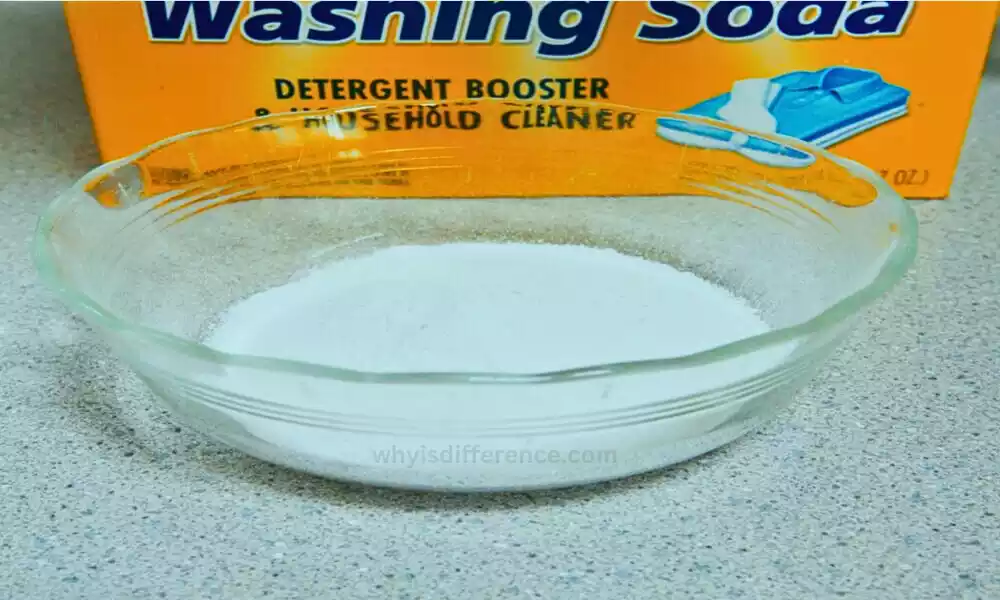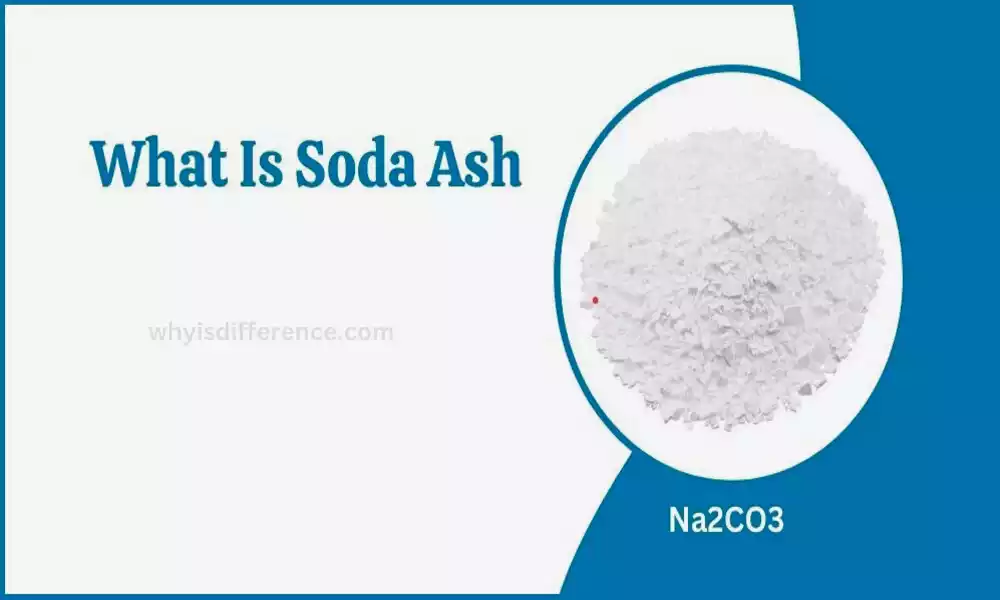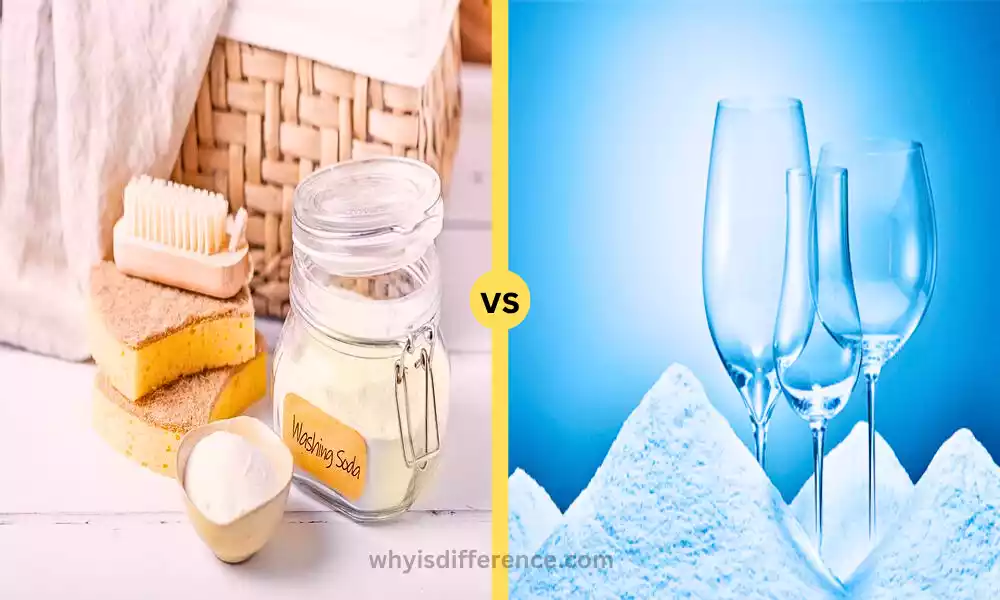In terms of chemical compounds, the terms washing soda and soda ash may sound quite similar. Which often leads to confusion. So, these two materials have distinct properties and applications that set them apart. This article aims to clarify the difference between washing soda and soda ash. To highlight their varied properties, uses, and significance in various industries.
Importance of Washing Soda
Washing soda, chemically known as sodium carbonate decahydrate (Na2CO3·10H2O). It is of considerable importance due to its versatile properties and wide range of applications. Its role as a strong alkaline compound makes it a staple in a variety of domestic and industrial settings. One of its primary household uses is as a laundry booster.
Whereas its high alkalinity helps break down stubborn stains, grease, and oils from fabrics. This feature not only enhances the performance of laundry detergents but also contributes to more thorough and efficient cleaning. Washing soda is applied as a water softener. Helps remove mineral deposits from pipes and appliances. As a result, their lifespan is prolonged.
Its eco-friendly nature adds to its appeal. Because it is biodegradable and causes minimal harm to the environment compared to harsh chemicals. So, the importance of washing soda lies in its benefits for cleaner and more sustainable living through its various cleaning and maintenance applications.
Importance of Soda Ash
Soda ash, scientifically known as sodium carbonate (Na2CO3). It has wide significance across industries due to its wide variety of applications and essential properties. Its alkaline nature and ability to act as a pH regulator make it an important ingredient in the manufacture of various products. One of its primary industrial uses is in glassmaking, where it acts as a fluxing agent.
Silica lowers the melting point and aids in glass formation. Soda ash is a key ingredient in detergent manufacturing. which enables the emulsification of oil and the breaking down of organic matter to remove dirt and stains. Its application extends to metallurgy, as it helps remove impurities from metals during the refining process.
So, soda ash plays a role in water treatment. Adjusts pH levels to ensure proper coagulation and flocculation in wastewater treatment facilities. The versatility of soda ash highlights its importance in contributing to the quality enhancement of everyday products and essential industrial processes, modern manufacturing, cleanliness, and efficient resource use.
What is Washing Soda?
Washing soda, also known as sodium carbonate decahydrate (Na2CO3·10H2O). It is a crystalline compound widely recognized for its exceptional cleansing and alkaline properties. It can be obtained from natural sources or produced artificially from ordinary soda ash by hydration process. Washing soda’s distinct alkalinity makes it an invaluable asset in household cleaning.

Where it acts as a powerful laundry booster. Effectively breaks down tough stains, grease, and dirt. Its water-softening ability contributes to improved detergent performance and prevents mineral build-up in pipes and appliances. Its eco-friendly composition aligns with environmentally conscious cleaning practices.
Because it is biodegradable and less harmful to the ecosystem than harsh chemicals. So, washing soda’s unique combination of alkalinity and cleaning efficiency makes it an essential ingredient for maintaining cleanliness and hygiene in the household while minimizing environmental impact.
What is Soda Ash?
Soda ash, chemically known as sodium carbonate (Na2CO3). A basic inorganic compound with wide industrial applications. Derived from natural deposits such as Trona ore or produced artificially by the Solvay process. Soda ash is known for its alkaline properties and its important role in various fields.

Its most notable application is in the manufacture of glass, where it acts as a fluxing agent. Silica lowers the melting point and facilitates glass formation. In the manufacture of detergents, soda ash plays an important role in helping to remove stains and dirt through the process of emulsification and saponification. It is also important in metallurgy.
Where it helps remove impurities from the metal during refining. So, soda ash finds use in water treatment to adjust pH levels and promote effective coagulation and flocculation in wastewater treatment plants. Its versatile applications underscore its significance in improving industrial processes, improving product quality, and contributing to essential aspects of modern living.
Difference Between Washing Soda and Soda Ash
| Aspect | Washing Soda (Sodium Carbonate Decahydrate) | Soda Ash (Sodium Carbonate) |
|---|---|---|
| Chemical Formula | Na2CO3·10H2O | Na2CO3 |
| Common Names | Washing Soda, Soda Crystals | Soda Ash, Sodium Carbonate |
| Alkalinity | Strongly alkaline | Alkaline |
| pH Regulation | Can adjust pH upward | pH regulation agent |
| Appearance | White crystalline powder or granules | White powder or granules |
| Household Uses | Laundry booster, stain removal | Not typically used in households |
| Industrial Uses | Limited industrial applications | Glass manufacturing, detergents, metallurgy, water treatment |
| Production Sources | Synthetically from Soda Ash and water | Natural sources (trona deposits, brines), synthetic processes (Solvay) |
| Hydration | Present as decahydrate | Anhydrous |
| Environmental Impact | Biodegradable, less harmful | Biodegradable, commonly considered safe |
| Hazardous Nature | Generally safe for household use | Requires handling precautions in industries |
Please note that this chart provides a simplified comparison and doesn’t cover all potential aspects or variations of the compounds. Always refer to specific sources for detailed and accurate information.
Natural Sources and Production
Here’s a breakdown of the natural sources and production methods for both Washing Soda (Sodium Carbonate Decahydrate) and Soda Ash (Sodium Carbonate):
Washing Soda (Sodium Carbonate Decahydrate):
- Natural Sources: While Washing Soda can occur naturally in some mineral deposits, it is often produced synthetically from Soda Ash (Sodium Carbonate) and water. However, the natural occurrence is not as abundant as other forms of sodium carbonate.
- Synthetic Production: The synthetic production of Washing Soda involves a hydration process. Soda Ash (anhydrous sodium carbonate) reacts with water to form Washing Soda (sodium carbonate decahydrate). This process involves dissolving Soda Ash in water and then allowing the solution to crystallize, yielding Washing Soda crystals.
Soda Ash (Sodium Carbonate):
- Natural Sources: Soda Ash can be found in various natural sources, with trona deposits and sodium carbonate-rich brines being the primary sources. Trona is a naturally occurring mineral that contains both sodium carbonate and sodium bicarbonate. Trona mining involves extracting and processing this mineral to obtain Soda Ash.
- Solvay Process: The Solvay process is a common method for synthetic Soda Ash production. In this method, ammonia reacts with carbon dioxide in a solution containing sodium chloride (salt) to form sodium bicarbonate. The sodium bicarbonate is then heated to produce Soda Ash and release carbon dioxide, which can be recycled in the process. This process is widely used due to its efficiency and the ability to utilize common raw materials.
Although washing soda is found naturally in mineral deposits. It is often produced through a synthetic process involving soda ash and water. So, soda ash can be collected from natural deposits such as trona and brine. or can be produced artificially by methods such as the Solvay process.
Physical Properties
Here’s a comparison of the physical properties of Washing Soda (Sodium Carbonate Decahydrate) and Soda Ash (Sodium Carbonate):
Washing Soda (Sodium Carbonate Decahydrate):
- Appearance: White, crystalline powder or granules.
- Texture: Fine and granulated, resembling common salt or sugar.
- Color: White.
- Hydration: Present as a decahydrate (containing 10 water molecules), leading to its chemical formula Na2CO3·10H2O.
- Solubility: Washing Soda is highly soluble in water, dissolving readily to form an alkaline solution.
- pH: It is strongly alkaline, and when dissolved in water, it raises the pH level significantly.
Soda Ash (Sodium Carbonate):
- Appearance: White, fine powder or granules.
- Texture: Fine and powdery, similar to baking soda.
- Color: White.
- Hydration: Anhydrous, meaning it does not contain water molecules in its chemical structure.
- Solubility: Soda Ash is also highly soluble in water, forming an alkaline solution when dissolved.
- pH: Like Washing Soda, Soda Ash is alkaline and raises the pH of solutions when dissolved.
Note: Both Washing Soda and Soda Ash are hygroscopic, meaning they can absorb moisture from the air and become damp or clumpy over time.
Washing soda is usually found in white granular form due to its decahydrate structure. While soda ash appears as a fine white powder or granules. Because it lacks water molecules in its structure. Both substances are highly soluble in water and contribute to alkalinity when dissolved.
Safety Considerations
Safety considerations are crucial when handling and using chemicals like Washing Soda (Sodium Carbonate Decahydrate) and Soda Ash (Sodium Carbonate).
Here’s a comparison of the safety considerations for both substances:
Washing Soda (Sodium Carbonate Decahydrate):
- Skin and Eye Contact: Washing Soda can be irritating to the skin and eyes. Direct contact may cause redness, irritation, and discomfort.
- Ingestion: Ingesting Washing Soda can result in stomach discomfort, nausea, and vomiting. It’s important to keep it out of reach of children and avoid accidental ingestion.
- Inhalation: Inhaling Washing Soda dust can irritate the respiratory tract. It’s advisable to work in a well-ventilated area or wear a mask when handling it in powder form.
- Storage: Store Washing Soda in a dry place away from moisture to prevent clumping. Keep it in a childproof container and away from food items.
- Precautions: Wear gloves and protective eyewear when handling Washing Soda, especially in its powdered form. Avoid inhaling dust. In case of contact with skin or eyes, rinse with plenty of water.
Soda Ash (Sodium Carbonate):
- Skin and Eye Contact: Soda Ash can cause skin and eye irritation. Contact with eyes may lead to redness, pain, and possible injury.
- Ingestion: Ingesting Soda Ash can result in stomach upset, nausea, and vomiting. It should not be ingested.
- Inhalation: Inhaling Soda Ash dust can irritate the respiratory system. Working in a well-ventilated area and using a mask are recommended.
- Storage: Store Soda Ash in a dry place to prevent moisture absorption. Keep it out of reach of children and away from food products.
- Precautions: Wear protective gear such as gloves and safety goggles when working with Soda Ash. Avoid inhaling dust. In case of contact, rinse affected areas with water.
General Safety Tips:
- Labeling: Always keep chemicals in their original labeled containers.
- Storage: Store both Washing Soda and Soda Ash out of reach of children and pets.
- Ventilation: Work in well-ventilated areas to minimize inhalation of dust.
- Protection: Use gloves, protective eyewear, and masks when handling these substances, especially in powdered form.
- Accidental Exposure: In case of accidental exposure, follow first aid measures and seek medical attention if necessary.
Note that specific safety guidelines may vary depending on the concentration and purity of the substance. It is therefore important to refer to the Safety Data Sheet (SDS) provided by the manufacturers for detailed information and instructions.
Conclusion
Although the terms washing soda and soda ash may seem interchangeable. They possess distinct characteristics and serve different purposes. Washing soda’s solubility and alkaline nature make it a valuable household cleaning agent. The anhydrous composition of soda ash finds application in glass production, chemicals, and various industrial processes. It is crucial to understand the difference between these compounds in order to use them effectively in their respective field of application.

